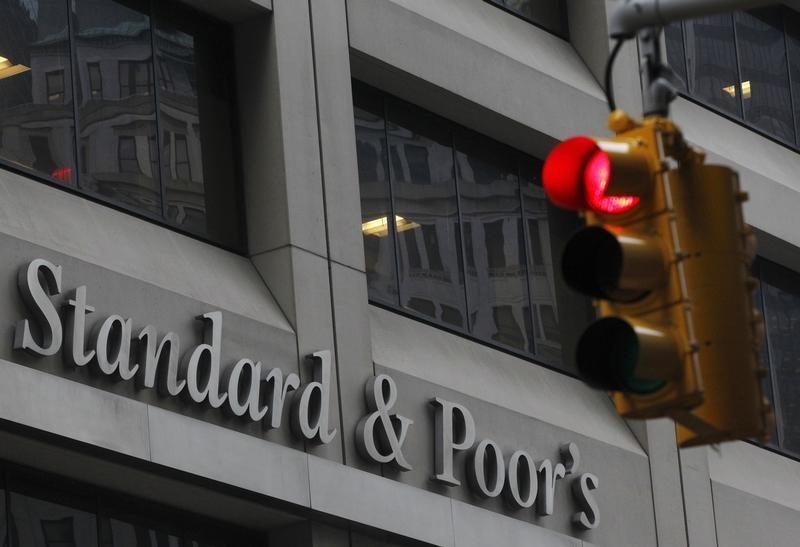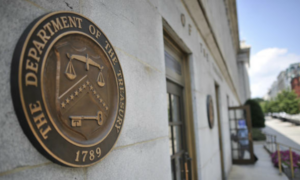
(S&P Global, 19.Dec.2023) — S&P Global Ratings raised its long-term global scale ratings on Brazil to ‘BB’ from ‘BB-‘. The outlook on the long-term ratings is stable. We affirmed Brazil’s global scale short-term ratings at ‘B’ and our national scale long-term rating at ‘brAAA’. We also raised the transfer and convertibility assessment on the country to ‘BBB-‘ from ‘BB+’.
Overview
| • | A recently approved tax reform in Brazil extends the country’s track record of pragmatic policy implementation over the last seven years. |
| • | Improving but still moderately weak economic growth prospects and a weak fiscal situation continue to constrain Brazil’s creditworthiness. |
| • | We upgraded our long-term ratings on Brazil to ‘BB’ from ‘BB-‘. |
| • | Our stable outlook reflects our expectation that the country will make slow progress in addressing fiscal imbalances and still weak economic prospects, balanced by a strong external position and monetary policy that is helping to re-anchor inflation expectations. |
Rating Action
On Dec. 19, 2023, S&P Global Ratings raised its long-term global scale ratings on Brazil to ‘BB’ from ‘BB-‘. The outlook on the long-term ratings is stable. We affirmed Brazil’s global scale short-term ratings at ‘B’ and our national scale long-term rating at ‘brAAA’. We also raised the transfer and convertibility assessment on the country to ‘BBB-‘ from ‘BB+’.
Outlook
The stable outlook reflects our expectation that Brazil will maintain a strong external position, thanks to strong commodity output and limited external financing needs. We also believe Brazil’s institutional framework can sustain stable and pragmatic policymaking based on extensive checks and balances across the executive, legislative, and judicial branches of government. We expect a very gradual fiscal correction but anticipate fiscal deficits will remain large.
Downside scenario
We could lower our ratings within the next two years if poor policy implementation leads to further fiscal deterioration and a higher-than-expected debt burden. A deterioration in policy signaling could also lower foreign direct investment inflows and, thereby, weaken Brazil’s external position.
Upside scenario
We could raise our ratings over the next two years if benefits from the now extensive set of structural and microeconomic reforms improve Brazil’s long-term growth trajectory. Faster than expected progress at addressing fiscal imbalances that stabilizes debt levels could also lead us to raise the ratings.
Rationale
We raised the long-term global scale ratings on Brazil following the recent approval of a tax reform. While it will be implemented gradually, the reform is a significant overhaul of the tax system and will likely translate into productivity gains over the long term.
The reform adds to a now extensive track record of structural and microeconomic reforms since 2016, which in our opinion reflects an increasingly pragmatic institutional framework that helps to anchor macroeconomic stability. We expect Brazilian institutions to continue to slowly address the economic inefficiencies that slow the country’s growth, as well as the country’s rigid budgetary structure, which contributes to large fiscal deficits and a high debt burden.
Brazil’s strong external position, flexible exchange rate, and monetary policy regime based on an inflation-targeting framework conducted by an autonomous central bank support the ratings. Moreover, deepening domestic capital and debt markets mitigate the sovereign’s rollover risk and allow the government to maintain a favorable debt composition, mostly denominated in local currency.
Institutional and economic profile: Tax reform extends a track record of policy pragmatism
| • | The tax reform will help to partially tackle the complexities of Brazil’s fiscal code. |
| • | The institutional framework, characterized by fragmented political and economic interest, will remain slow to address fiscal rigidities. |
| • | Brazil’s growth trajectory has improved in recent years but remains weaker than those of emerging market peers. |
On Dec. 15, 2023, the Brazilian Congress approved a revenue-neutral tax reform that consolidates five indirect taxes into a dual value-added tax (VAT) system plus a selective tax. We believe this reform will clarify Brazil’s indirect tax burden and significantly reduce the cost of tax compliance.
The reform also significantly reduces the number of consumption tax codes and strengthens the noncumulative characteristics of the tax system. In addition, it will tax items at destination rather than the origin, although this change will happen over 50 years. The reform also mandates an automatic VAT reimbursement mechanism for vulnerable families.
The reform is structural, and a simpler tax code will translate into productivity gains, but most likely in the long term. For the next two years, Brazil’s authorities will regulate the new framework. The Federal VAT tax will become fully effective in 2027. The subnational governments’ VAT tax will be fully effective only in 2033. The reform maintains several tax benefits to different economic sectors from the current system, which would raise the VAT rate on other sectors, and two transition funds for the states will add to central government fiscal pressures.
Regardless, the tax reform adds to a reformist track record since 2016, which includes reforms to improve labor conditions, soften the pension burden, strengthen the management of government-related entities, grant the official autonomy of the Brazilian Central Bank, create a market-determined funding cost for Brazil’s Development Bank (BNDES), and two fiscal rules. It also includes a series of microeconomic reforms across sectors.
The missing component has been the lack of progress to address the large, rigid, and inefficient spending of the Brazilian general government. Over time, this has resulted in consistent fiscal deficits, squeezing resources from the financial sector and partially explaining Brazil’s weak growth. The large size of the government apparatus is partially due to a very detailed constitution, deriving from fragmented political and economic interests and requiring large sums of political capital to fix.
We expect the Brazilian economy to grow at almost 3% in 2023. This is because of strong agricultural performance and its significant spillovers over the first half of the year, coupled with robust employment and a recovery in real salaries that kept domestic consumption resilient.
That said, the Brazilian economy has slowed over the second half of 2023. Moreover, given our expectation of slowing global economic growth–and, with it, external demand–we expect Brazil’s GDP to slow toward 1.5% in 2024. Looser monetary conditions should sustain growth at around 2% in 2025-2026. We believe real per-capita GDP growth will average 1.5% over 2023-2026, remaining lower than that of peers with a similar level of economic development. We estimate GDP per capita will reach US$9,800 in 2023 and trend toward US$10,800 by 2026.
Flexibility and performance profile: Strong external position and monetary policy credibility mitigate Brazil’s still weak fiscal performance
| • | We expect fiscal deficits and the debt burden to remain high in 2023-2026. |
| • | Restrictive monetary policy and benign weather conditions are curbing inflation. |
| • | Brazil’s external position is strong, supported by growing current account receipts and low external debt. |
We expect general government deficits to average 6.2% of GDP over 2023-2026, reflecting the challenges of fulfilling campaign promises, high interest cost, a low level of discretionary spending, and only gradual success on tax measures.
The government moved quickly to fulfill part of its campaign promises and expanded President Luiz Inacio Lula da Silva’s flagship “Bolsa Familia” program and created rules to allow the minimum salary to grow in real terms. With the reversal of the constitutional amendment that created the spending ceiling, the budgetary minimums for health and education are again linked to primary revenue growth. Another reversal, on a cap on legal claims payment, aims to tackle a growing expenditure burden by 2027 but adds immediate pressure to the nominal fiscal result. The cost of central government debt has stabilized but is almost 200 basis points higher than the 2019-2022 average.
Moreover, the recently approved fiscal rule maintained some degree of fiscal policy directing, but the government has sent mixed signals about its commitment to the rule. Central Government discretionary space accounted only for 1.6% of GDP in average over 2019-2022, and under the Brazilian fiscal rule is about the space the government has to pursue fiscal policy. Government has repeatedly stated that spending cuts should be avoided as much as possible. As a result, the government relies mostly on tax revenue measures to meet its fiscal targets.
That said, the short-term outcomes of measures like a tiebreaker vote at the tax council are difficult to forecast, because tax payers can continue to explore legal alternatives. Tax measures on offshore and closed-end funds will likely provoke an economic response and translate into one-off revenue. Given its economic impact, Congress and the courts are likely to move cautiously on matters such as the effect of state subsidies on the tax for commerce and services on the federal income tax base.
Accounting for the inflation effect on Brazil’s debt dynamics, we expect the change in net general government debt to average 7% of GDP over 2023-2026. This will bring Brazil’s net general government debt, at 52.3% of GDP in 2022, close to 67% by 2026. With Brazil’s reference rates declining and government interest cost stabilizing, we expect Brazil’s interest cost to remain below 15% of general government revenue over 2023-2026.
The composition of Brazil’s debt mitigates the risks embedded in the high debt burden. The debt is mostly denominated in local currency, and the central government’s strong liquidity position mitigates rollover risk. The government has an adequate number of debt instruments to satisfy investor demand while fulfilling its debt strategy in terms of maturity and cost, as demonstrated by the recent creation of a sustainable bond framework.
In addition, foreign currency and domestic debt held by nonresidents are only around 10% of central government debt, limiting the risk of potential adverse external shocks on debt rollover. The share of domestic lenders, including the banking sector, is high. On the other hand, the banking sector’s already high exposure to the government (which accounts for over 20% of its assets) will constrain the availability of credit to other sectors of the economy.
Contingent liabilities from the financial system are low, considering the size of the financial sector, at around 135% of GDP. In addition, our Banking Industry Country Risk Assessment on Brazil is ‘6’. (BICRA scores are on a scale from ‘1’ to ’10’, with group ‘1’ representing the lowest-risk banking systems and group ’10’ the highest-risk ones.) Debt issued by public-sector companies is less than 10% of GDP and poses limited risk to the government. That said, potential legal claims against the government amount to over 20% of GDP, which we consider a significant contingent liability.
After its operational independence was approved in 2021, the Brazilian Central Bank has been able to withstand political pressure and keep monetary policy restrictive. Coupled with lower international oil prices and favorable weather conditions that smoothed food and electricity prices, this has led nominal and core inflation to trend down in 2023.
Annual inflation and market expectations are now within the central bank’s target range, which has allowed the central bank to cut its reference interest rate by a total of 200 basis points across four consecutive board decisions, to 11.75%. We expect the central bank to continue to cut rates to 9% in 2024.
Brazil is benefiting from rising commodity output over recent years, mostly from grains and oil, which continues to offset lower commodity prices. Current account receipts, as a result, increased to 22% of GDP in 2022, from 11.5% in 2010. We believe they’ll remain at a similar level for the foreseeable future.
The current account deficit should remain around 2% of GDP over 2023-2026, fully financed by foreign direct investment inflows. We expect the domestic market to provide most of the government’s financing needs, which should help shift Brazil back to a narrow net external debt creditor by 2024.
We classify the Brazilian real as an actively traded currency, based on the Bank for International Settlements’ 2022 Triennial Survey. The survey showed that the real contributes at least 1% of global foreign exchange market turnover.
____________________

